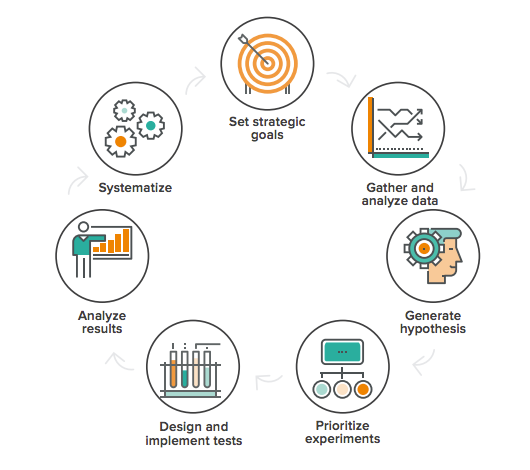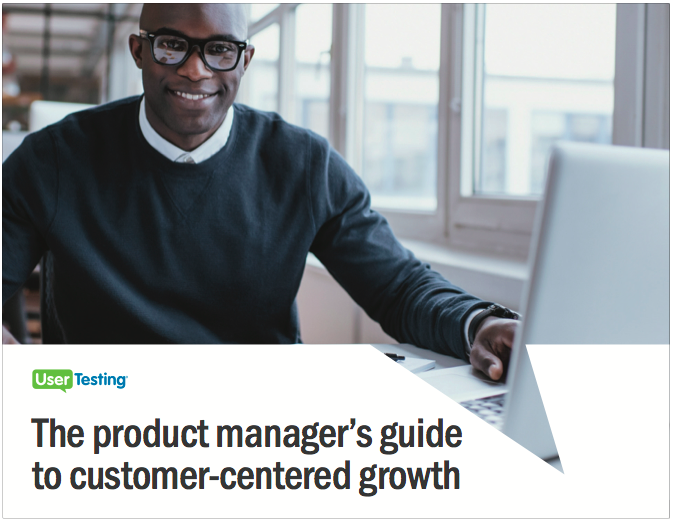
How to set OKRs for your growth team: a brief introduction

“Growth is a system, not a bag of tricks”
—Andrew Chen, Head of Supply Growth at Uber
Growing your product isn’t about one-off tactics, secrets, or hacks.
Sustainable growth comes first from building a ‘must-have’ experience. And then implementing a rigorous process of experimentation to discover the unique combination of tactics that work for your product, audience, and business model.
But before you dive into the day-to-day of your testing process, it’s important to take a step back to set your strategic goals and figure out:
- Where you want to go
- When you want to get there
- How you’ll measure success
But how do you do that exactly? We recommend using the Objective and Key Results (OKR) framework.
What is an OKR?
The OKR framework is one of the most popular methods for goal setting among growth teams. It was first invented by Intel, and was popularized at high-growth tech companies like Google, Zynga, and LinkedIn. An OKR is made up of two parts:
- Objective (O)—The first part is your Objective, which is the short, inspirational vision of what you want to accomplish that’s designed to get people excited to jump out of bed in the morning. We’ll share concrete examples in the “how-to” sections below.
- Key Results (KR)—The second part is your Key Results, which are the quantifiable measurements you use to determine whether or not you’ve accomplished your Objective. Keep reading for examples.
Why OKRs are important for growth
"OKRs provide focus, unite the teams behind a single strategy, and make all goals into stretch goals. If you want to get your entire company to execute like the hounds of hell are behind them and the gates of Valhalla are open before them, try the OKR approach out."
—Christina Wodtke, ex-PM at Zynga, LinkedIn, Myspace
OKRs help you make meaningful progress toward your growth goals in three ways. First, they align your team efforts and make sure everyone is working towards the same goal—rather than focusing on small tasks.
Second, they help with accountability between teams because, like Kleiner Perkins’ General Partner John Doerr—the guy who introduced OKRs to Google—said:
“We know what we need to accomplish, when it needs to be accomplished, who is going to own it, and how we are going to work together to get it done.”
And finally, they create focus, prioritization, and ensure that everyone knows exactly what’s expected of them.
How to set your Objective
The first thing you need to do is answer the question:
What’s the one area of the customer lifecycle that, if you made substantial improvements, would have the biggest impact on your growth curve right now?
Is it acquisition, activation, retention, referral, or monetization? There’s no right or wrong choice, and the answer will be different for every product.
Once you’ve determined which area to focus on, set a time frame for how long you’ll focus on it. We recommend a period of time between 30 and 90 days. Anything less than that won’t be enough to make substantial progress. And anything more will start to drag on, making it easy for your team to lose motivation.
Now that you have your area of focus and your time frame, the next step is to craft your Objective. It should have the following characteristics:
- Short and sweet — it should be a single sentence
- Qualitative and inspirational — it’s meant to get people jumping out of bed in the morning excited to get to work
- Independent of other teams — your objective has to be completely yours, and you shouldn’t be able to point fingers at any other teams if you don’t accomplish it
Let’s say you work on a consumer product, like Ipsy for example, and you decide to focus on improving user retention for the next quarter. An example of a good Objective would be: Make Ipsy the most engaging product in the retail beauty market.
How to set your Key Results
The next step in the OKR framework is to set three Key Results that quantify your Objective and measure whether or not you met your goal.
Using the same example above, a good set of Key Results for user retention might look like this:
- 40% of new users come back twice in the first week
- Net Promoter Score of 8.5
- 20% activation rate
(Note: If you want to learn more about how to set OKRs, we recommend checking out how Google sets OKRs, the art of the OKR, and this brief guide to OKRs.)
Begin your experimentation process
Once you’ve decided where you want to go and what you’ll focus on for the next 30-90 days, the next step is to immediately dive into your growth experimentation process:

If you want to learn more about this process and what your growth team should be doing on the day-to-day, check out our eBook, The Product Manager’s Guide to Customer-Centered Growth. You’ll learn how to:
- Implement a proven five-step experimentation process
- Use customer insights to discover growth opportunities
- Increase the accuracy of your tests over time
Click the button below to download your guide now!
In this Article






